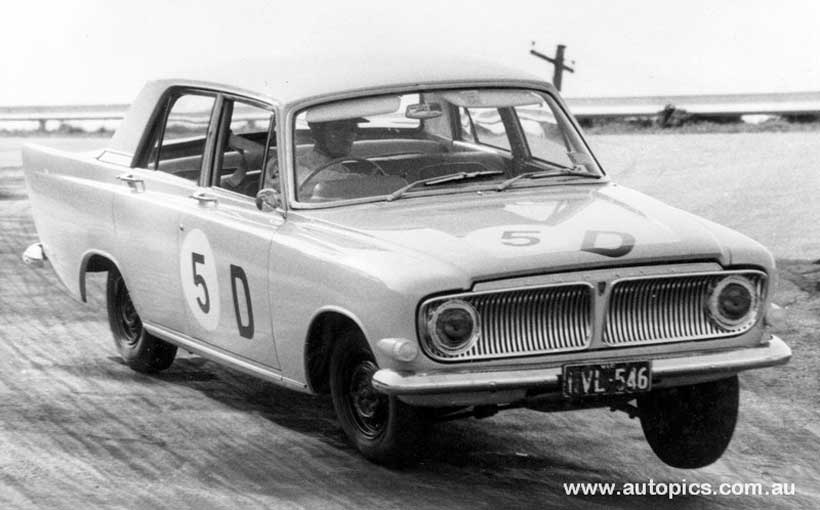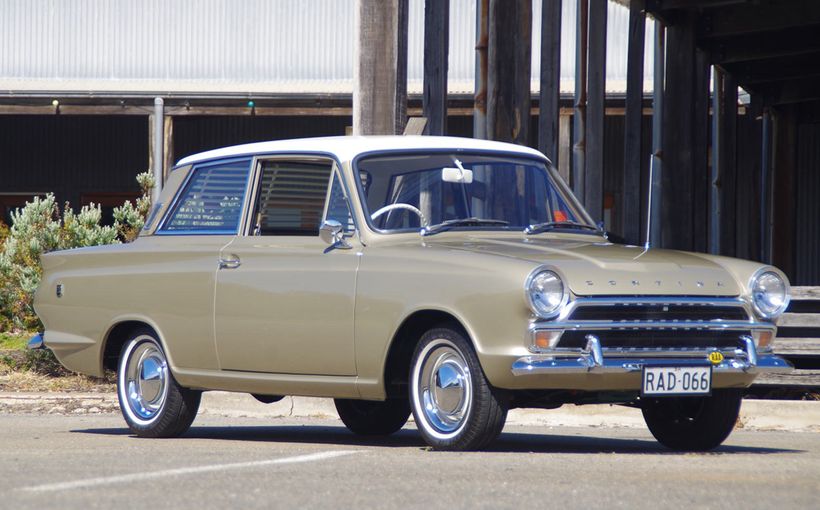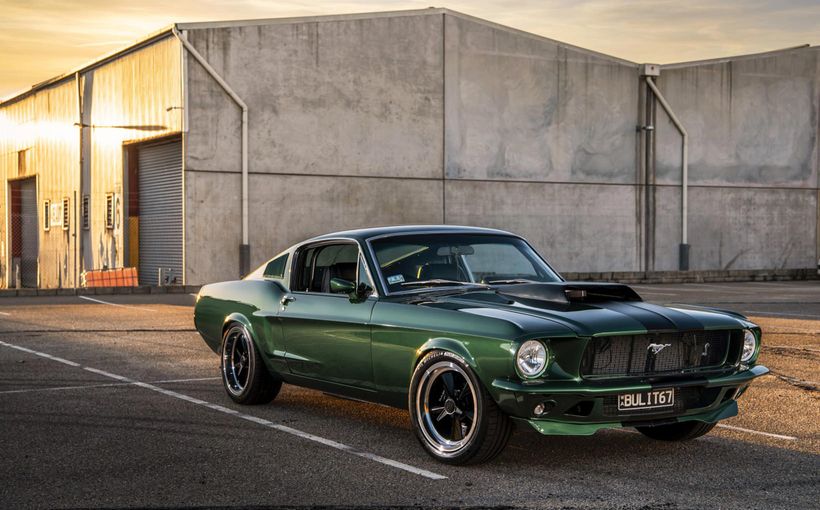Ford Zephyr Mark III: The 'British Falcon’ that should have won the Armstrong 500

If not for a faulty bonnet latch, a Ford Zephyr Mark III could well have beaten Ford’s latest XL Falcon to win the 1962 Armstrong 500 at Phillip Island. On reflection, the emergence of this minor but history-changing flaw in the locally-assembled British Ford was a blessing in disguise for the embattled Ford Motor Company of Australia.
Fortunately for Ford, Harry Firth and Bob Jane did win the 1962 race outright in one of the latest XL Falcons powered by the optional new 170 cid (2.8 litre) ‘Pursuit’ six cylinder engine. However, had the works-entered Zephyr of Geoff Russell and David Anderson - which was demonstrably faster than the Falcons - not been delayed by a bonnet which refused to stay shut, the Mark III had the potential to win its class and take outright line honours in Australia’s toughest race.
And had that occurred, the Zephyr would have unintentionally turned up the heat even more on Ford’s locally-manufactured Falcon, which was losing sales and struggling for survival after serious durability issues emerged in the first XK model released in 1960.

Admittedly, the Zephyr was a higher-priced and more sophisticated offering than the Falcon and competing in a different class. Even so, an outright victory (although there was no formal recognition of first-across-the-line honours by race organisers at the time) would have raised more doubts over the company’s decision to go with the US-designed Falcon over a locally manufactured Zephyr, as Ford tried to take a slice of a family sedan market dominated by Holden.
The Zephyr Mark III and XL Falcon both featured unitary chassis designs with similar wheelbase dimensions, although the British Ford was more solidly built and notably heavier than its relatively light US-designed stablemate.
The Zephyr was a superior driver’s car in many respects, with a full-synchro four-speed gearbox (Falcon had three-speed), front disc brakes (Falcon had drums) and genuine 95-plus mph (160 km/h) top speed. Its lusty 2.6 litre inline six was slightly smaller than the XL’s 2.8 litre Pursuit, but produced more power (106 bhp vs 101 bhp) due mainly to excellent refinement of its induction system.
At that time the Falcon and Zephyr shared a similar relationship to that of arch rival GM-H, with the local Holden being sold alongside the classier and more upmarket UK-designed and locally assembled Vauxhall Cresta.

In 1960, a similar awkward situation existed for GM-H in the first Armstrong 500, when a PA Cresta made history by being first car across the line in Australia’s toughest endurance race. The fact that Holden did not win (no FB Holdens even competed) also raised eyebrows about the credentials of ‘Australia’s Own Car’ at the time. However, unlike the embattled new Falcon, by then Holden had been building solid customer loyalty for more than a decade, so the win only served to boost Vauxhall sales rather than damage Holden’s standing.
Even though the Zephyr Mark III was a superior track competitor to the Falcon, such a comparison was soon forgotten when Ford changed tack in 1963 and switched its main race and rally focus to the new Cortina Mark 1. That was also the year the Armstrong 500 moved from the crumbling Phillip Island circuit in Victoria to its permanent home at Mount Panorama at Bathurst.
The Zephyr Mark III continued to race competitively in its class for two more years in the Armstrong 500, before it was effectively replaced by more luxurious upmarket versions of the recovering local Falcon and had disappeared from Ford showrooms by the mid-1960s.
Through it all, the British sedan with its eye-catching styling, spirited performance and driver engagement won plenty of admirers and is revered today by legions of Zephyr enthusiasts as one of the best locally-assembled Fords sold in Australia.

1962 Armstrong 500: If not for a faulty bonnet latch…
The last Armstrong 500 to be held at the disintegrating Phillip Island circuit also marked the first official entries from the Ford Motor Company of Australia.
The third and final running attracted a tremendous field of cars and drivers. The previous year’s economic recession had eased, car sales were rebounding strongly and the car makers and their dealers had regained confidence.
This was reflected in the huge 41-car entry list, boasting 18 different models from the total of 28 that were eligible. The four-class structure remained from previous years, but the cars were now grouped according to their retail prices rather than engine capacities: Class D (under £900), Class C (£901-1050), Class B (£1051-1240) and Class A (£1251-2000).
This would remain in place until the end of the showroom stock racing era in 1972. This was a good move for Australia’s car-buying public as it let them compare the performance of cars within different price brackets. However, from a racing point of view, it also created some ludicrous imbalances in class battles at times.

Ford entered two of its new 170 Pursuit XL Falcons in Class B. One was to be crewed by reigning Armstrong 500 champions Harry Firth and Bob Jane who had won the 1961 race in a Mercedes Benz 220SE.
A second works car was shared by Ken Harper, John Reaburn and Syd Fisher. Three more XL Falcon 170 Pursuits were private entries, with the only other Class B entrants being a lone EJ Holden and an Austin Freeway.
However, as if to hedge its bets in case the unproven Falcons failed, Ford placed a third factory-backed entry of a Zephyr Mark III for Geoff Russell and David Anderson in Class A, which catered for the most expensive cars in the race. Their premium-priced class competition included 1960 winners Frank Coad and John Roxburgh, returning in a dealer-backed 2.6 litre Vauxhall Velox.
Local Studebaker assemblers, Canada Cycle and Motor Company, backed the Victorian Police team again as it had done in previous years by loaning them an ex-police Mobile Traffic Section four-door Studebaker Lark sedan for constables Fred Sutherland and Bill Graetz to drive, powered by the larger 289 cid (4.7 litre) 225 bhp V8 from the Hawk.

A second Lark was entered by a NSW team, this time a private entry for Don Algie/Kingsley Hibbard. Class A also hosted three of the new R & S series Valiants with their powerful 145 bhp slant six engines, which would all be affected by radiator damage during the race.
For 1962, the pressure was on. With Ford taking a step up as a factory entrant and with a national marketing strategy to be built around the race result, anything less than outright victory would have been a failure.
All cars now had to be fitted with laminated windscreens. This was in direct response to the alarming deterioration of the Phillip Island track, which was now so heavily patched with bitumen it resembled a patchwork quilt prior to the start. And it didn’t take long to turn into a car wrecker.
Race day dawned bright and sunny and it was clear that the level of competition had shifted up a gear compared to the more relaxed contests seen in the two previous 500s. This was now a serious motor race, with the front runners pushing very hard from the start. As the big field erupted away from the start line, Geoff Russell was showing impressive pace as the Zephyr Mark III duelled for the race lead with the big V8 Studebaker Lark.
Back in those days, all cars also had to complete the first 100 miles (160 kms) or 34 laps of the race without stopping for fuel, oil or a driver change. And if any mechanical trouble occurred during that time, the driver had to get out and fix it himself without any assistance from his pit crew.
It was this rule that effectively brought the Zephyr’s race undone in the early running, as described by noted historian Bill Tuckey in Chevron’s Australia’s Greatest Motor Race:

“Geoff Russell began a frustrating series of stops that undoubtedly cost the Zephyr the race because he was lapping up to six seconds a lap better than the Falcons,” Tuckey wrote.
“The problem was that every time he hit a decent bump (and there were plenty of those!) the bonnet would jump onto the second latch. So the Clerk of Course would hang out a black flag, meaning ‘come into the pits and fix it’. And of course until the 34th lap Russell had to try to fix it himself.
“He was black-flagged no less than four times and eventually the bonnet beat the second latch as well and flew up into the windscreen. So they eventually tied it back into place with rope and that’s how the car finished.”
As expected, the Falcons were well in control of Class B and in the Zephyr’s absence the Firth/Jane works entry maintained a cracking pace that allowed it to topple the more powerful Class A V8 Studebaker Larks considered the pre-race favourites.
It was a great result for Ford - and really the best result given the pressing need to rebuild the Falcon’s damaged reputation. The Zephyr finished 5th outright and second in class A, after losing four laps due to the bonnet latch problem.

1963 Armstrong 500: If not for a flat tyre…
This was the first Armstrong 500 to be held at its new permanent home at Mount Panorama in regional Bathurst, NSW. With four competing classes, four examples of Ford’s hot new disc-braked Cortina GT and six of Holden’s new EH S4 (a clandestine Bathurst special) would face off in the battle for Class C (£1001-£1199) and outright victory.
In addition to entering two of the four Cortina GTs, Ford also backed another Zephyr Mark III for Geoff Russell and John Reaburn in Class D (£1200-£2000) for the event’s most expensive cars. This class also featured the Valiant S series and latest AP5 models, Studebaker Lark, the latest PB model Vauxhall Velox, Peugeot 404 and Humber Snipe.
As expected, in practice the Weldon/Needham V8 Studebaker Lark set the fastest top speed down Conrod Straight at a “blistering” 114 mph (182 km/h) to be amongst the fastest cars on the track.
Weldon also won the drag race to the first corner and will forever hold the distinction of leading the first lap of the first Bathurst 500. He led the first seven laps in fact, until the big American car ran out of brake linings.

Meanwhile the Velox had come into the pits with a loose tappet which had to be fixed only by the driver using tools carried in the car. When it got going again a fuel blockage developed and after 16 laps in total it dropped a valve and retired.
With Bob Jane and Harry Firth heading for a Class C win and outright victory in their works-entered Cortina GT, Geoff Russell and John Reaburn in the works Zephyr were also on course to win Class D having led the big car division handsomely for most of the race.
The four-speed six cylinder British sedan had again shown its class in competition, comfortably outlasting its Vauxhall opponent and with its powerful front disc brakes suffering none of the chronic brake trouble that affected its drum-braked Studebaker rivals.

However, after enjoying such a trouble-free run, the works Ford suffered a blown tyre with only one lap remaining. This allowed the slant six-powered Valiant AP5 driven by a surprised Tony Reynolds and Tony Allen to sweep past and take the class win.
The Zephyr still managed to limp home second in class and fifth outright, but to suffer such cruel luck so close to the end of the race seemed like a continuation of the misfortune suffered at Phillip Island the year before. Two class wins in two years gone begging. Clearly, with a bit of luck, the Mark III’s Great Race record could have been so different.

1964 Armstrong 500: End of the road
The Zephyr Mark III made its third and final appearance in the Armstrong, with a single car privately entered by Brian Lawler and well known Jaguar racer Bill Burns.
The British Ford was again slotted into the priciest Class D, which this year attracted the usual Studebaker Larks plus the first appearance of the brilliant Citroen ID19 and the rorty new six cylinder Triumph 2000.
In those early days, practice times had no relevance to positions on the starting grid as the race was started in class order - with logically the biggest and most expensive Class D cars starting from the front - and their starting positions decided by a simple ballot draw.

As a result, two of the new Triumph 2000s had the honour of leading the huge field into the first corner. However, it soon became clear that they – and the rest of the field - could not match the V8 grunt of the two Studebaker Larks, which would again set a cracking pace for as long as their feeble drum brakes and skinny steel wheels could hold up.
Despite both suffering problems in those areas again, the Larks finished first and second in Class D. The Citroen ID19 shared by Bill Buckle and Brian Foley made an impressive Bathurst debut by finishing third in class, one lap clear of the lone Zephyr which beat all the new Triumph 2000s.
It was the third and final appearance of the Zephyr Mark III, as Ford had started producing a more luxurious ‘Futura’ model of the local XL and XM Falcons. With the even more upmarket XP ‘Fairmont’ arriving in 1965, the Zephyr quietly departed from the sales charts. It will always be remembered as a great car, but with a little luck it could also have been a Great Race winner, too.









